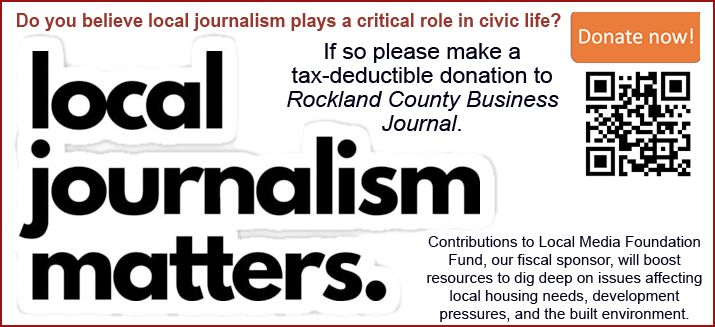|
RCBJ-Audible (Listen For Free)
|
New York State Has Made Access To Affordable Housing A Priority Through Grants, Tax Incentives, Direct Funding
By David Carlucci
While much public attention centers on New York City’s housing challenges, significant opportunities are emerging across the rest of New York State to support affordable, stable housing for individuals, families, and developers. From direct financial assistance for homebuyers to state-backed incentives for building and preserving affordable housing, these programs are making a tangible impact in suburban and upstate communities — including Rockland County and the broader Hudson Valley region.

For individuals and families outside the five boroughs, the Statewide HOME Program serves as a cornerstone of support. Administered through local municipalities and nonprofits, the program provides rental assistance, down payment and closing cost assistance for first-time homebuyers, and funding for the rehabilitation or construction of affordable housing. It is specifically designed to serve low- and moderate-income households across New York, including areas where rising housing costs are straining working families.
HOME Program funds may be used to assist households with incomes at or below 80 percent of area median income. Rental projects must serve households with incomes at or below 60 percent of the area median income. All HOME projects must remain affordable for a period of between 5 to 20 years depending on the activity and amount of HOME funds invested.
Another key program is the Affordable Home Ownership Development Program (AHOD), operated by the New York State Affordable Housing Corporation. This initiative offers grants to help families buy or renovate homes, allowing people to build equity and put down roots in their communities. By targeting financial assistance to households that might not otherwise qualify for conventional loans or mortgage products, the program helps close the homeownership gap in suburban and rural areas.
AHOD grants are not made directly to individual homebuyers or homeowners but to government and non-government sponsors (the grantees) that develop affordable housing or assist homeowners in funding necessary repairs.
For residents looking to improve their homes, the state also offers housing-related grants that cover everything from energy efficiency upgrades to accessibility modifications for seniors and people with disabilities. These funds are particularly useful for low-income homeowners and minority residents seeking to make essential improvements or start home-based businesses.
Beyond individual assistance, the state is also investing heavily in affordable housing development in regions beyond New York City. Through the NYS HOME Program, grants are available to municipalities, nonprofits, and private developers to create or preserve affordable housing. These funds are critical in markets like Rockland, Orange, and Westchester counties, where demand for affordable rental units often outpaces supply.
The state’s newly launched Affordable Neighborhoods for New Yorkers Program (485-x) also presents a major opportunity for developers outside the city. Replacing the expired 421-a tax break, this new incentive supports housing development in communities that commit to affordability and smart growth. The program is designed to adapt to local market conditions, meaning that developers in suburban and upstate regions can take advantage of tax abatements while fulfilling community housing needs.
A significant addition to the state’s toolkit is the Pro-Housing Community Program — a $100 million investment designed to support infrastructure improvements and promote new housing construction. As part of Governor Kathy Hochul’s broader plan to build or preserve 100,000 affordable homes over five years, this program offers revolving loan funds, grants, and other incentives to local governments and developers who commit to creating mixed-income housing. Communities that demonstrate a clear commitment to growth and housing inclusion are prioritized for these funds, encouraging local governments to reduce zoning barriers and streamline permitting.
To date, only the Town of Ramapo and the Villages of Nyack and Haverstraw have been certified as Pro Housing Communities by New York State, enabling those municipalities to participate in the multiple funding opportunities available to certified communities.
Additionally, the state continues to prioritize supportive housing — affordable housing developments that also offer social services such as case management, mental health counseling, and employment support. Grants and technical assistance are available to nonprofits and mission-driven developers across the state, helping ensure that vulnerable populations — including individuals facing homelessness or those with special needs — have access to stable, service-enriched housing.
While city-state collaborations, like the Logan Fountain project in Brooklyn, often grab headlines, similar efforts are underway across the state. In the Hudson Valley, for example, public-private partnerships are helping convert underutilized properties into mixed-use housing developments, while simultaneously revitalizing downtown business districts.
The 2025 New York State budget underscores this commitment, with expanded resources for housing construction, stronger tenant protections, and targeted funding for areas facing housing shortages. For Rockland County in particular, these programs offer a powerful mix of financial tools and development incentives that can be leveraged to meet local needs — whether it’s helping seniors age in place, supporting first-time homebuyers, or encouraging smart growth through infill development.
As affordability challenges persist beyond the city limits, these statewide programs represent a significant opportunity for both residents and developers to engage in solutions. For local governments, nonprofits, and housing advocates, tapping into these resources could be the key to unlocking a new generation of affordable, resilient communities throughout New York.












